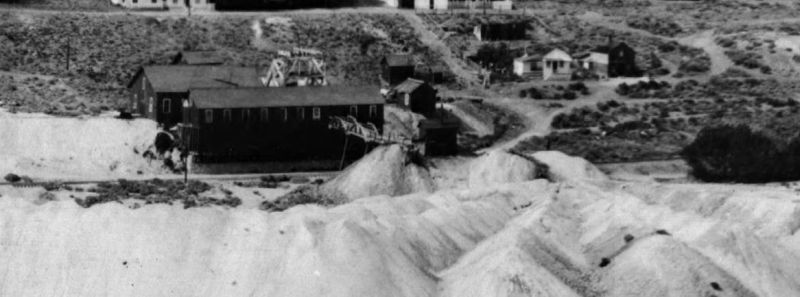Hey friends,
This will be the continuation of my H&N mine model build, covered here:
The model’s main structure was completed in January, but it lacked the final touch: a trestle coming out of the doors over the ore bin, which took the waste rock to the dump piles on the other side of the V&T track.
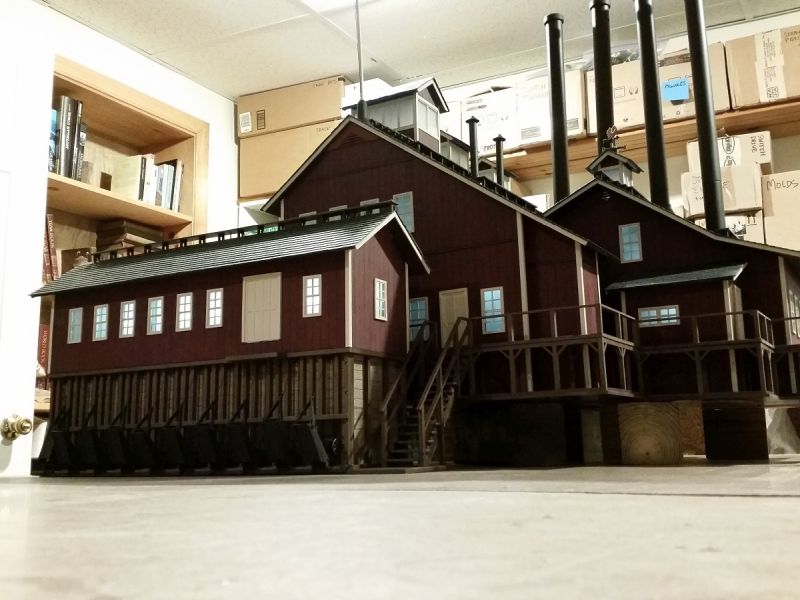
In my 1/3/18 post on the original thread, I mentioned that this trestle project would be strange in a fun way, because site research would affect the design; and that site work has only just started. But the findings thus far, along with a couple “new” photo discoveries, have given me enough info to get me close enough (hopefully). So I wanted to post on where things stand at this point.
Here’s the current design model, showing the ore bin at the center. At its far end is a short trestle, and the jury is still out on why it was there. From the ore bin, moving left, are the bridge across the RR tracks; the start of the dump trestle; a shed and ore bin (built ca. 1980); and the trestle as it continued on for some distance.
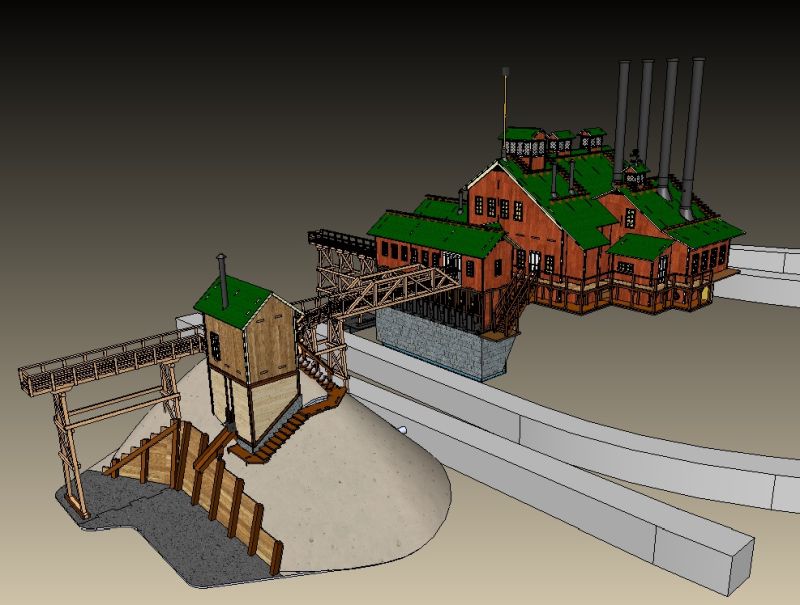
Originally, because of the earliest photos, I had designed the whole thing like this:
However, my period is slightly later, ~1890. By then the right fork of the trestle had been chopped off, the little bin at the bottom was gone, and a puzzling shed and bin built where the stub of the trestle fork was. I found out about that shed last October, when I prowled around the site. Here it is, but all flattened. In the foreground are remains of the trestle, with the ore bin off to the left. It’s kinda amazing any of this is there; original Comstock mine structures have practically disappeared.

After some photo work, I saw that this shed had been there since at least as far back as 1880. Since I’m modeling in the 90’s, I reworked the model to accommodate it. That was February-ish I think.
BUT, two things happened. The first site visit was performed (by 2 Comstock historians and 1 VP of the V&T TT Historical society, no less!). They confirmed that there was an ore bin under the shed; and, looking through the debris, they noticed the bin went to the east! I’d modeled it going to the west, based on my blurry understanding of even blurrier pics. Around that time, a “new” photo went up for auction, one never seen by the historians I know. One alerted me to it, and here it is, from ~1885:
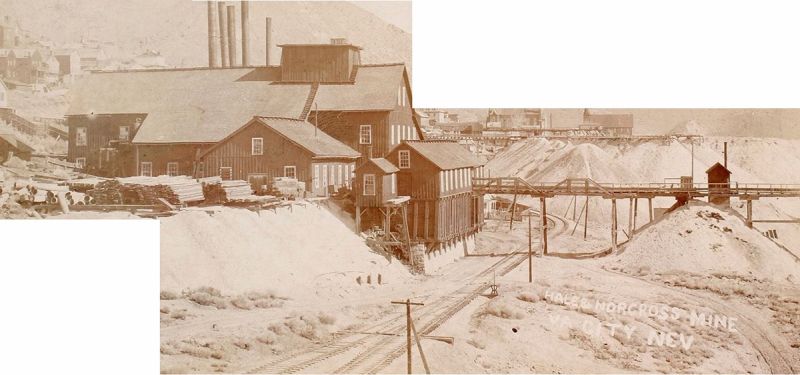
Between this and the site observations, we concluded that the bin dumped to the east (right, in the above photo), with a wagon road serving its chute. So I again reworked the design for those conclusions. Understand that my model is very compressed, left to right. If it weren’t, the chute and loading area would be completely hidden, as it was in the above photo.
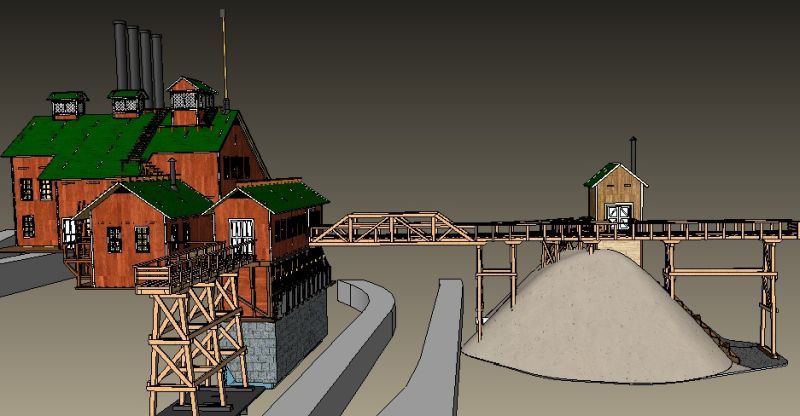
OK, enough with the history stuff. More field work will happen in the next month, but I need to get started on the model if I want to show pics of it next October. Here’s the overall module:
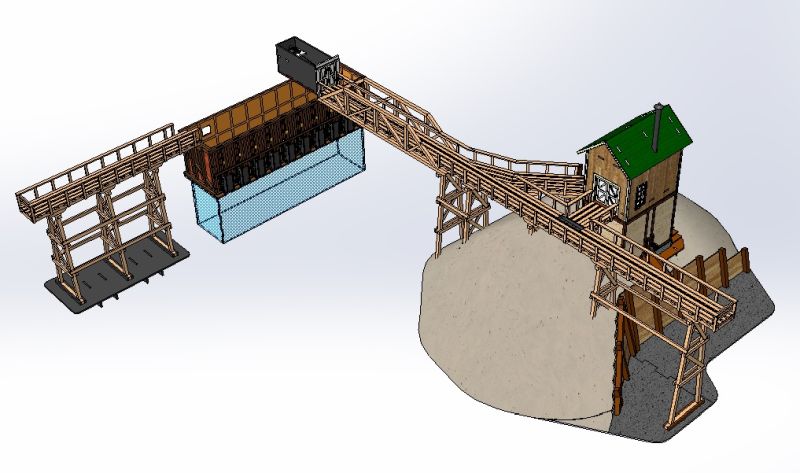
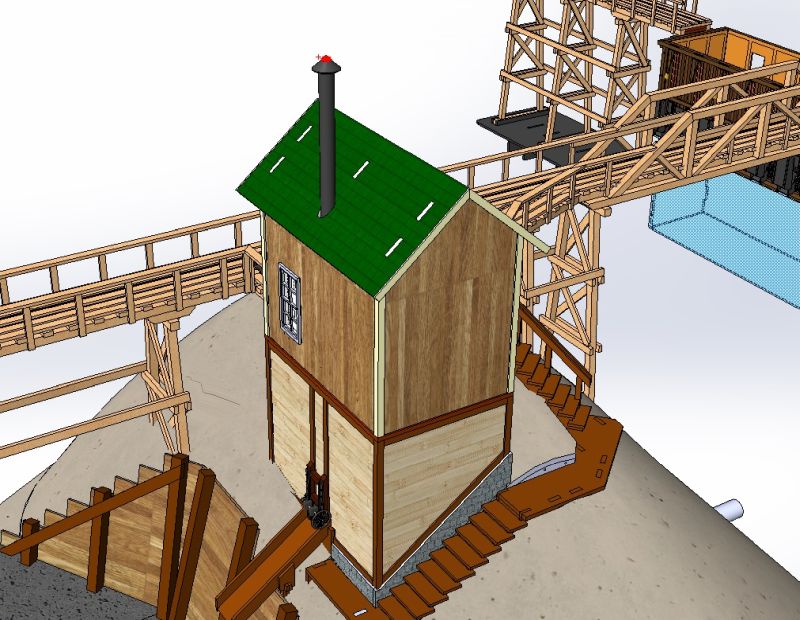
This will (hopefully) be an animated model. The ore bin doors will open, the ore car (& miner) come out on the trestle. When nearing the shed, its door opens, with another figure attached. Some audio of them talking happens. Ore car goes to the end, and it all reverses. The shed will house the controller, MP3 player / amp, speaker, some lights & relays. Power will come from the nearby track rail (DCC).
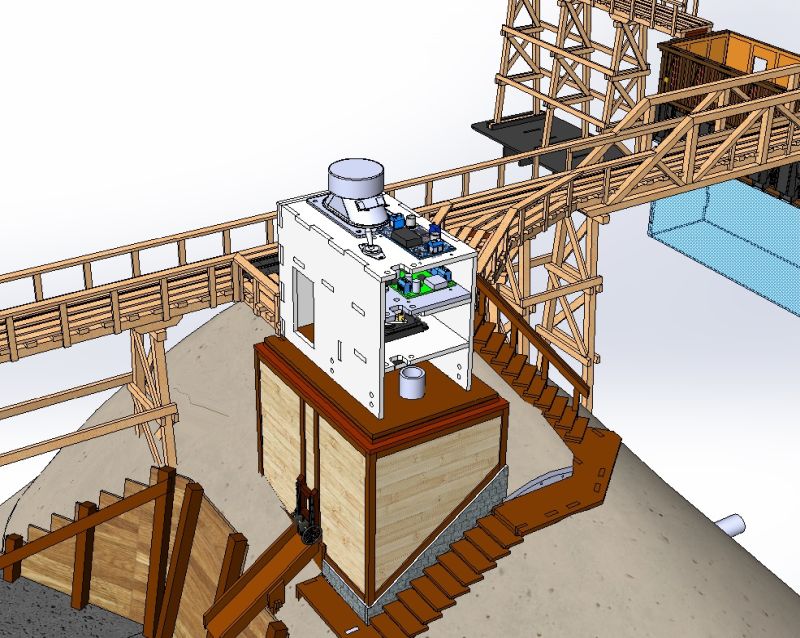
The modeling has been with a view to laser cut as much as possible. Here’s the waste hill with the Magicsculp shell hidden.

As with the main mine model, all the bits & pieces are slotted / tabbed for easy assembly and greater surface area for the cement. I think I’m finally done with the patterns, with this being an example:

Here’s all the pieces, with the laser patterns on the left, and cedar stock cutting drawings on the right. This doesn’t show much; just wanted to give you a feel for what comes next.
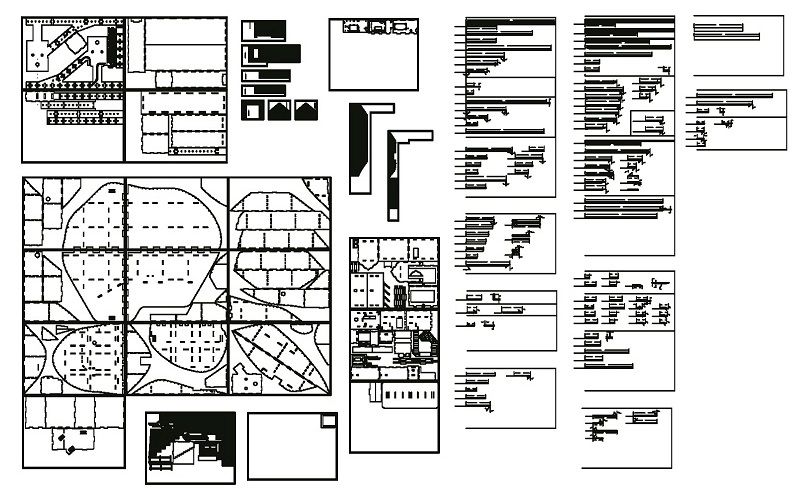
And, what comes next is ---- finally ---- the start of cutting operations! So I’ll be posting on that as things move along.
Cheers,
Cliff
